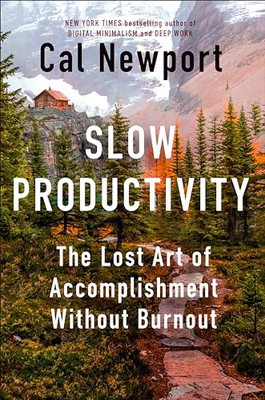Hybrid Work Doesn’t Have to Be Awful
A simple proposal to help fix it

If you ask Americans with a desk job what they want, many say flexibility. Specifically, they want control over where that desk is located and when they work at it. Luckily for them, the American workplace is by some measures more flexible than ever before. About half of U.S. workers have “remote-capable” jobs. And Gallup data suggest that a majority of those jobs are now hybrid, meaning that employees can split time between home and the office. Despite this greater flexibility, however, surveys from last year found that Americans were more stressed and less satisfied with their job than they were during the worst of the pandemic.
What explains this paradox? One possibility is that although hybrid work loosens the rigidity of a desk job, it exacerbates an even bigger problem: what I call the “overhead tax.”
Since well before the pandemic, we’ve lived in a world of low-friction digital communication, where passing an obligation to someone else is extremely easy. I send you an email with a simple question—“Hey, can you handle the Johnson contract?”—and a few moments of my effort have suddenly been alchemized into hours of your own. Faced with a growing number of chores, you push what you can onto other people’s plate, and they respond in kind. The result is an onslaught of ad hoc assignments, whipsawing across inboxes and chat channels, that culminates in a shared state of permanent overload.
[Derek Thompson: The biggest problem with remote work]
The problem with overstuffed to-do lists isn’t just the total time required to execute their contents, but the fact that each new commitment generates its own ongoing administrative demands—emails, chats, check-in calls, “quick” meetings. That’s the overhead tax. Before long, knowledge workers find themselves spending the bulk of their time talking about work instead of actually doing it. They then fall further behind as their to-do list lengthens and the overhead tax grows. This isn’t just an unproductive approach; it can be downright deranging.
Hybrid work doesn’t fix these dynamics. In fact, in offices where employees’ mixed schedules aren’t aligned, it can exacerbate them. When people aren’t in the same place at the same time, what could be a quick in-person discussion becomes a virtual meeting. This helps explain a 2022 workplace report from Microsoft that found the number of online meetings had increased 252 percent from the start of the pandemic, exhausting the time available to get things done. To make matters worse, these meetings aren’t even that effective. The same Microsoft report found that 44 percent of hybrid employees say they don’t feel included in these online gatherings.
But with the right adjustments, hybrid schedules can be leveraged as a first step in undoing the problems that frictionless digital communication have wrought. Here’s my proposal: Declare that the days spent working remotely will be dedicated completely to actual uninterrupted work. No meetings, no email, and no chat. Each team should follow the same schedule, saving conversations about work for when everyone is in the office together.
This hybrid attention model cuts to the core of the overload crisis. Given multiple days each week to do nothing but make progress on tasks, you’ll more easily contain your backlog of commitments. This model should also reduce the total number of incoming tasks you’re asked to handle, as the days without email or meetings are days in which your colleagues can’t ask you to do more things. With less new work coming in and completed work going out faster, you’ll be more efficient and less overwhelmed. The ability to take breaks from the digital whirlwind will also make life more bearable—regardless of its effect on your productivity.
[Olga Khazan: One big benefit of remote work]
This idea will require some getting used to, but as knowledge workers have learned in recent years, their work habits are more adaptable than they might have realized. Some days you might end up stuck on a project because you can’t get a quick response to an email, and managers might worry that the inability to contact their teams will lead to employees loafing. But these complaints were the same ones that held back the widespread adoption of remote work, even after all the necessary technological support was in place (a moment that was arguably reached in 2006, when Skype added internet videoconferencing to its then-ubiquitous application). When the pandemic arrived, the fears of inconvenience and exploitation were revealed to be overblown; employees and managers adjusted, and we moved on. The shift to a hybrid-attention model would likely follow a similar path.
Some well-known companies have already experimented with aspects of this strategy. Early in the pandemic, Mark Zuckerberg said that Meta’s “No Meeting Wednesdays” was helping workers feel more efficient. In 2021, Citi introduced “Zoom-Free Fridays” to give its remote workforce a break from constant teleconferencing. These experiments validate the possibilities of hybrid attention, especially when companies offer clear communication rules.
The minor difficulties that come with any reform shouldn’t distract us from the real challenge of taming the sense of overload that has dominated knowledge work for so long. That will require replacing a fast definition of productivity, centered on activity and busyness, with something slower: the ability to quietly accomplish things that matter.
This article has been adapted from Cal Newport’s forthcoming book, Slow Productivity: The Lost Art of Accomplishment Without Burnout.
What's Your Reaction?




















